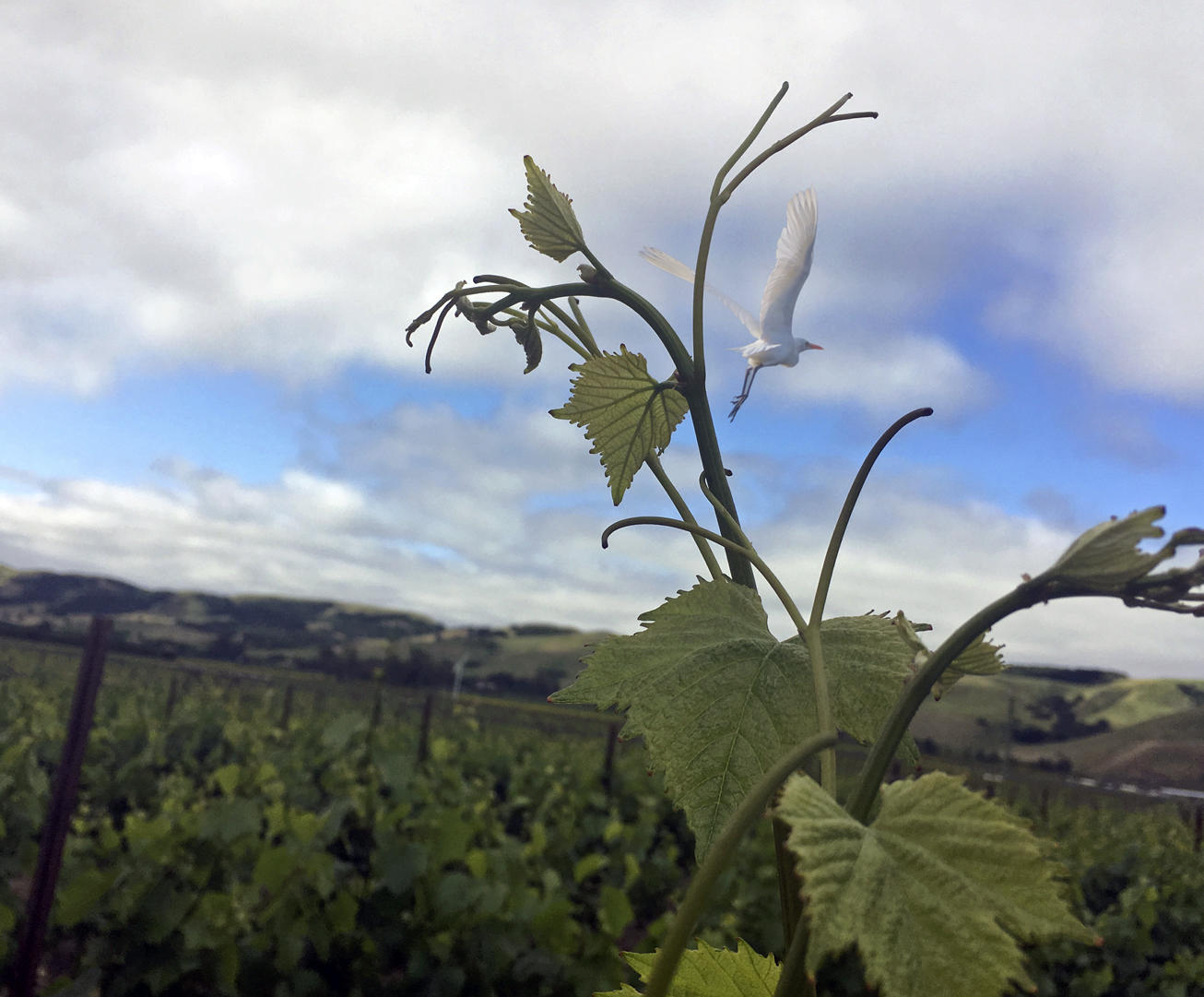
Why put an egret on a bottle of wine?
“The idea came from an egret itself,” recalls Sonoma County family winemaker John Bambury. He explains that one crisp morning he peered out from his back porch across the beauty of land settled by his ancestors. Just then, a majestic Great Egret flew in to rest among his vineyard plantings. Bambury notes that he was brought up to put nature first in farming, a legacy that goes way back to his grandmother, Catherine Bonneau, who first conceived of planting a vineyard here generations ago.
“I realized I was seeing what my grandmother experienced in her day, and many others across the years,” Bambury notes, “so, then and there, I was inspired to renew our family’s commitment to nature.”
He decided to leverage his family’s strength as a producer of fine wines to generate new resources for environmental causes. In 2016,
Bambury introduced Egret Wine with the goal of supporting a cause that is aligned with the family’s appreciation for nature and the land that has given them so much.
“We had some long conversations about which specific cause we should identify with, but the answer was actually kind of simple,” recalls Bambury. “We kept seeing these beautiful egrets on one of our properties in Sonoma. And the idea came together right there. Birds are such an essential part of the environment.”
Bambury said that when he learned how the egret is woven into the history of the modern environmental movement, he knew he had found the precise cause to rally around.
“I had some conversations with the folks at Audubon and learned how the egret is deeply tied to that organization’s history,” says Bambury. “It is a compelling story, and a cause that I wanted to stand behind as a sponsor.”
Today’s National Audubon Society has its roots in the late 19th Century, when it became fashionable for women to wear real bird feathers in their hats. The birds most sought were the Great Egret and the Snowy Egret, for their white feathers. The trend spurred a trade in wild bird feathers that had a devastating effect on native bird populations. Early conservationists sounded the alarm, and eventually came together to form the Audubon that we know today, which incorporates the Great Egret into is logo as a reminder of its history.
“Protecting birds is an important way to protect California’s natural legacy, and we’re proud to be sponsors of Audubon California,” says Bambury. “People have responded well to this cause. It’s doing so much. We believe it is truly effective in generating change. We are proud to contribute and glad to be a part of supporting their important work.”
Monthly Giving
Our monthly giving program offers the peace of mind that you’re doing your part every day.




